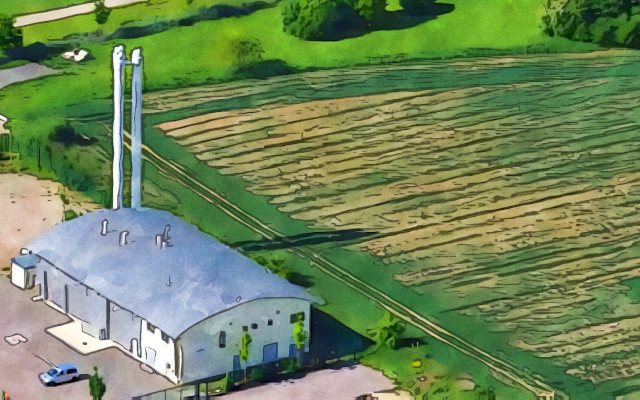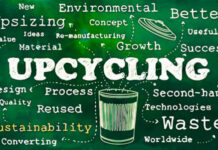A few days before the presentation in Brussels of the EU Green Deal Industrial Plan, (1) the CNEL (National Council for Economy and Labor) organized a conference in Rome on ‘Ecological Transition, a Development Opportunity for Italy.’
Following is a summary of the speeches-with valuable contributions from the Enrico Fermi Research Center, the Institute of Economics of the Scuola Superiore Sant’Anna and the Inequality and Diversity Forum-which can be heard on CNEL’s YouTube channel.
1) Ecological transition and innovation in Italy.
Researchers Angela Nardelli and Aurelio Patelli of the E. Fermi, at the CNEL conference on Jan. 25, 2022, highlighted how Italy is one of the top five EU member countries for green patent registration.
Innovation in Italy, including in the Southern Regions, is focused on non-fossil energy production (31 percent), transportation (19 percent), construction (15 percent) and waste management (7 percent. The latter is in line with the European average).
2) Skills and employment
Green technologies, according to Andrea Roventini of the Institute of Economics at the Scuola Superiore Sant’Anna, would have the potential to create 7 million jobs globally by 2030 at a higher-than-average wage. At the same time, many more obsolete jobs will be lost.
Therefore, it is crucial for policy to pre-occupy itself with guiding the transition, training and relocating the workforce. Ad hoc policies must be implemented to facilitate the transition, taking into account inequalities because some areas and regions will be more affected than others.
3) Inequalities and brakes on development.
Data show the correlation between inequality, development and green technologies. Enrico Fermi Research Center-through an empirical algorithm based on Economy Fitness & Complexity (2)-the most diverse countries in terms of exported products are also the most competitive. And this correlation applies to green technologies as well. (2)
The greater the income inequality the lower the competitiveness in the green sector, due to uncertainties about the ability to develop new green skills and technologies associated with higher costs. These differences can only be overcome with greater investment in education geared toward green capabilities.
3) Left-Behind Places
Polluting economic activities in turn have negative effects on economic development. As Maria Enrica Virgillito of the Sant’Anna Institute explains, ‘sacrifice zones’ also exist in Italian cities.
Left-Behind Places
are areas where economic activities produce high CO2 and greenhouse gas emissions. Three labor market effects are observed in these areas: loss of employment, low wages and outflows of inhabitants.
4) What solutions?
Possible solutions are outlined by Andrea Roventini of the Sant’Anna Institute, who explains how traditional tools of economics such as the free market or cost-benefit analysis cannot help in the green transition. Conversely, public regulations and industrial policies that assist technology and market development are needed.
Reducing greenhouse gas emissions is linked to de-carbonization. We need to avoid exploiting new fossil fuel deposits, ‘electrify’ the economy, and invest in renewable energy until we reach 90 percent coverage in 2025. The cost of solar and wind power has plummeted over the past 10 years to become cheaper than other sources. The more renewables are used, the cheaper they become.
5) Industrial policies
Industrial policies should encourage the return of manufacturing sectors that have relocated in recent decades, including those with high emissions. And lead the ecological transition of supply chains.
Italian politics, Roventini continued, today ‘cashes in dividends [delle grandi imprese a controllo pubblico e leader nelle nuove tecnologie verdi] and does not give that minimum of strategic direction to businesses.’ (3)
Given the benefits that could be had in terms of economic development, employment, wage levels and energy self-sufficiency, the big question is ‘why is there a total absence of debate on the ecological transition in Italy?’
Alessandra Mei
Cover drawing from the ‘Geothermal Masterplan’ project (Fraunhofer Institute for Energy Systems and Geothermal Energy, D)
Notes
(1) Dario Dongo. EU Green Deal Industrial Plan. The necessary ecological transition. GIFT (Great Italian Food Trade). 1.2.23
(2) Economic Fitness & Complex ity is an empirical algorithm based on two indices, the complexity of each exported product and Economic Fitness , which measures the industrial competitiveness of countries based on specific production capacity. Diverse countries are more competitive and patent more complex classes of technology
(3) The examples cited:
- Enel, Europe’s leading manufacturer of solar panels and integrated power plants where wind, solar and battery power are combined and green hydrogen production (in Portugal),
- Terna, which is laying high-intensity submarine cables to bring energy from southern Italy to northern Italy and Europe,
- Saipem, which builds floating offshore wind farms.
Graduated in Law from the University of Bologna, she attended the Master in Food Law at the same University. You participate in the WIISE srl benefit team by dedicating yourself to European and international research and innovation projects.








